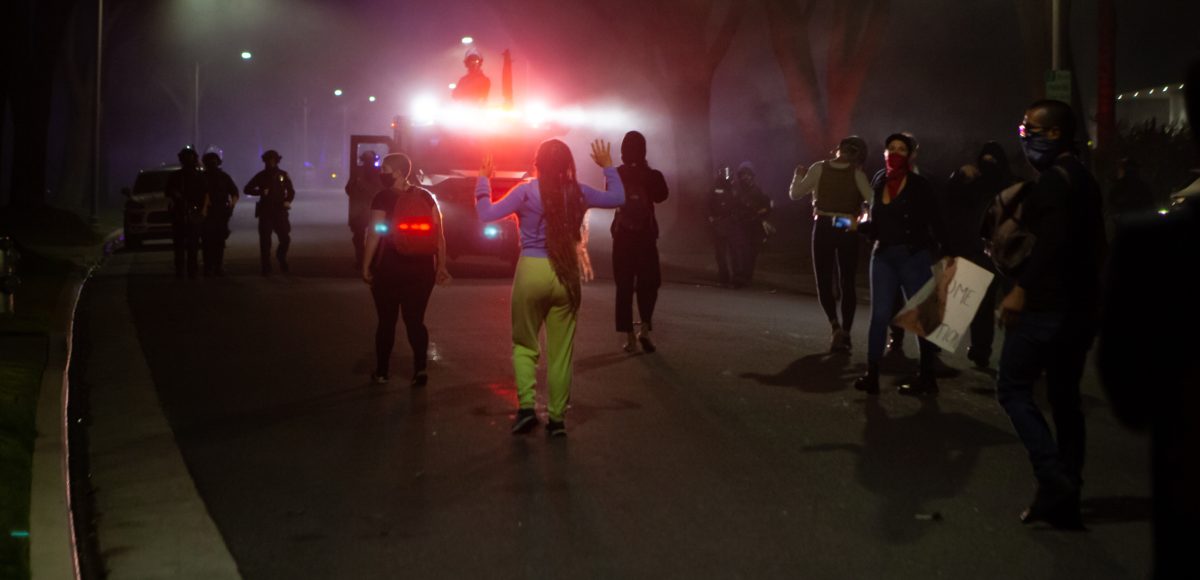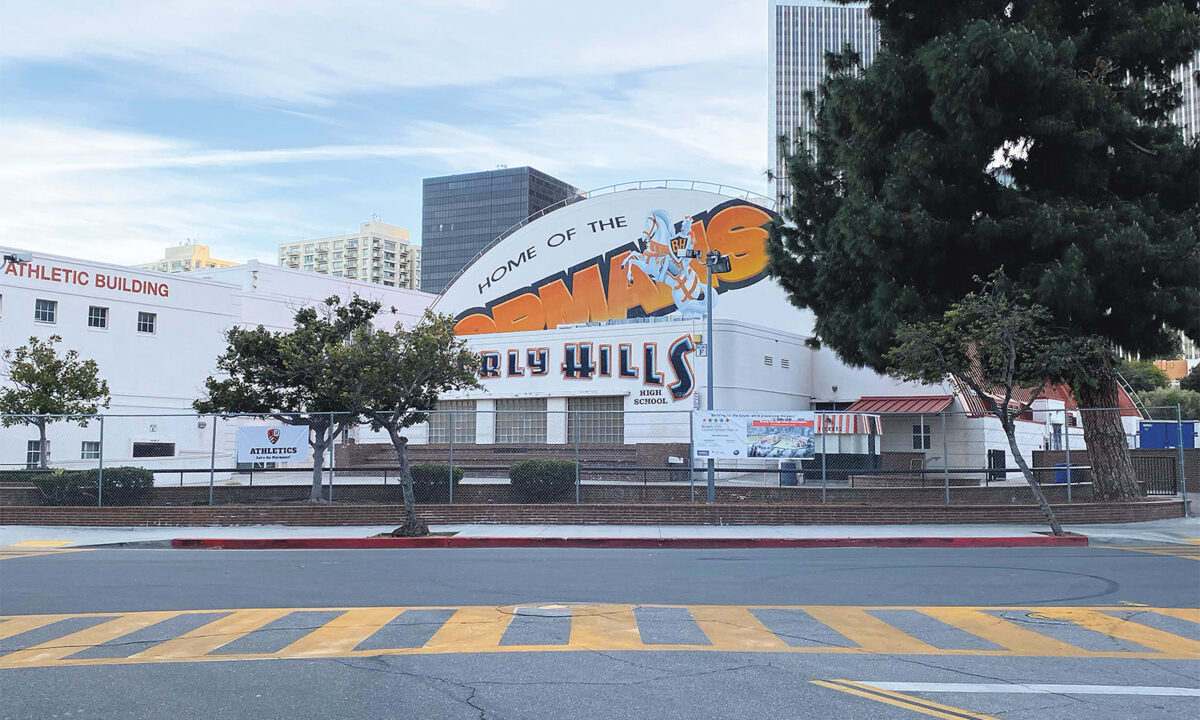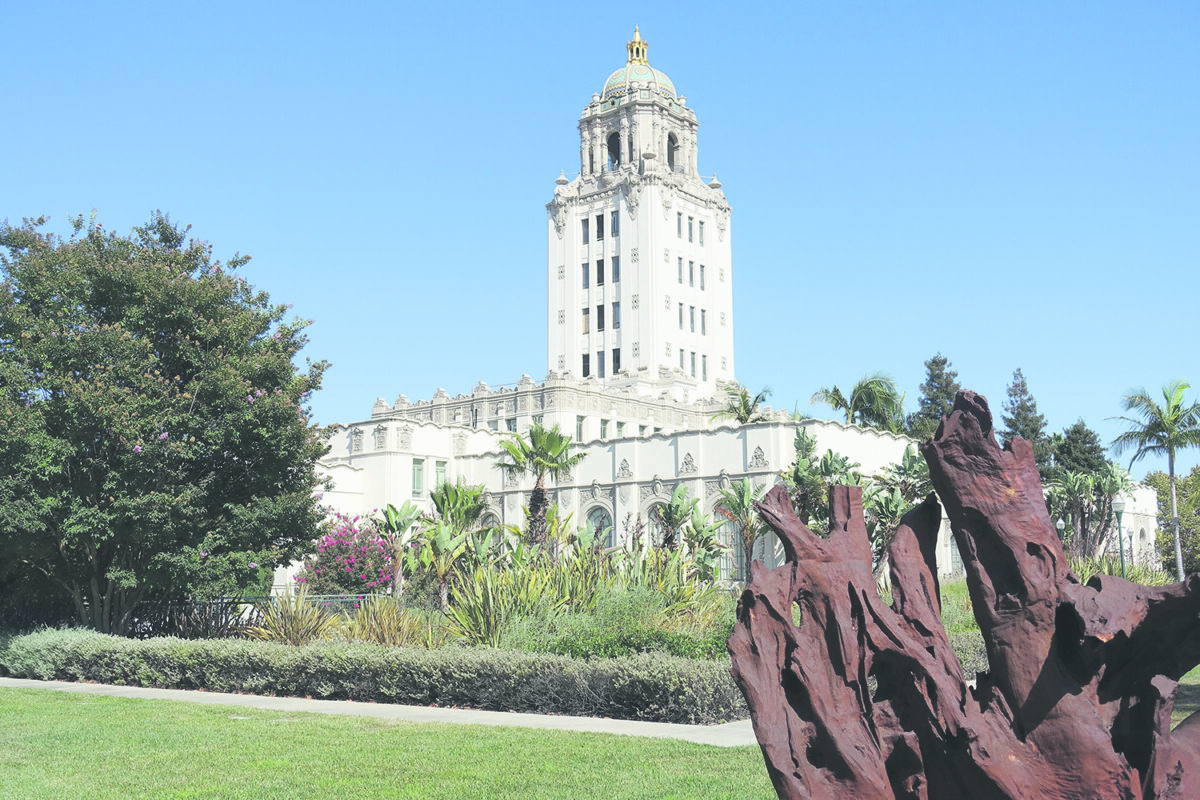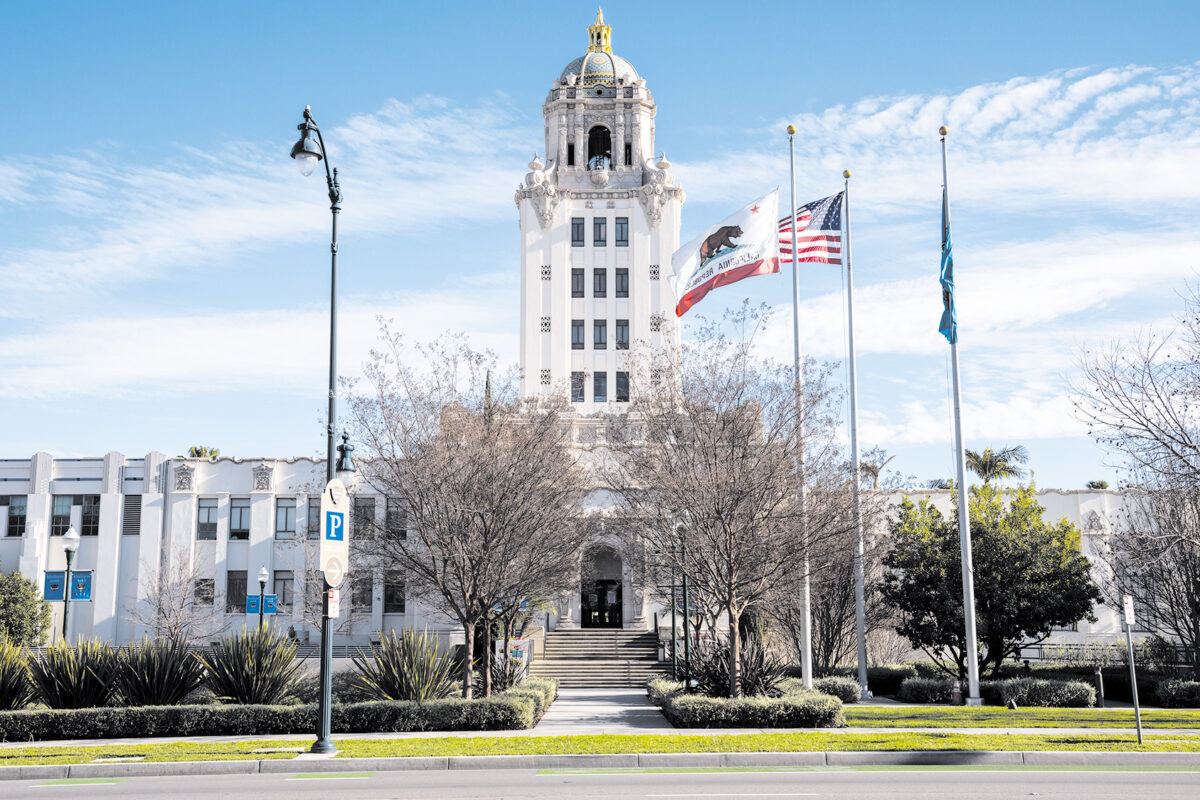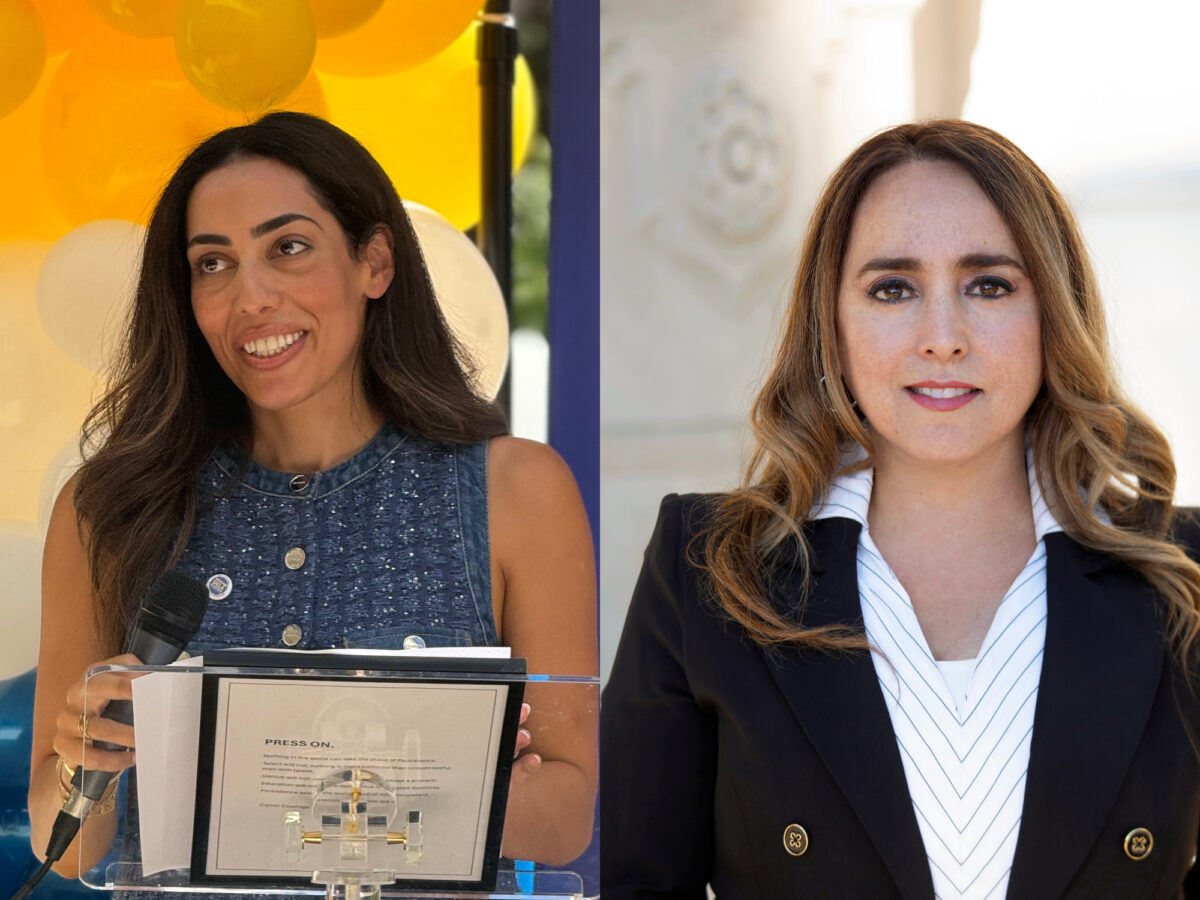For weeks now, ignited by the murder of George Floyd in Minneapolis, protesters have taken to the streets around the Southland, demanding a fundamental re-envisioning of the American system of policing and incarceration. The Los Angeles area has not seen civic outrage and unrest so sustained and widespread since the 1992 acquittal of officers in the beating of Rodney King.
On the night of June 12, a contingent of protesters – myself among them as press – took to the streets of Beverly Hills. The action was organized by one of the many new organizations to rise out of this moment, the Black Future Project, which described the event as “a peaceful protest through Beverly Hills as we bring the conversation to the center of white wealth in Los Angeles.” Participants were advised to gather at the intersection of Doheny Drive and Santa Monica Boulevard. From there, the group would make their way together to the lily pond at Beverly Gardens Park for a group discussion, complete with music, poetry, and history.
They never made it that far.
As the group took a detour from Santa Monica onto North Alpine Drive, a residential street, they encountered about a dozen Beverly Hills Police Department officers in riot gear accompanied by an armored vehicle.
The group of roughly 50 protesters was led by Black Future Project-founder James Butler, a 22-year-old YouTuber and performer.
Butler, who is black, came to activism unconventionally and unintentionally. A child of the foster care system until he was 15, he jumped from home to home and school to school for years. He turned to YouTube to stay connected with his far-flung network of friends. His videos racked up millions of views and he eventually parlayed his popularity into a career.
After the video of the George Floyd incident in Minneapolis went viral, Butler took first to YouTube, then, along with scores across the country, he took to the streets. Within that first tense week of protest, he was detained twice by police, once for protesting in front of Los Angeles Mayor Eric Garcetti’s house and again for defying curfew in the park by Los Angeles City Hall.
In detention, Butler and a handful of other protesters came up with the idea of a 24-hour protest – one inescapably visible to L.A.’s politicians. A few days later, tents appeared on the Grand Park green in front of L.A. City Hall, and in the nearly two weeks since, their numbers have swelled to more than 17, with more than 20 residents calling them home.
The average age of the Black Future Project hovers in the low 20’s, with some as young as 18 and others in their 30’s. Similar to protests across the country, the membership of Black Future Project is racially diverse. Some of the members lost jobs due to COVID-19, others are students in Ivy League universities and community colleges. There are experienced activists as well as others who have never protested before.
“I feel like I’m running a giant group home and it’s beautiful,” Butler told me at the L.A. camp on June 15. “We’re building our own community, our own Autonomous Zone. Like Seattle.” That day, the group made its first attempts at a home cooked meal, utilizing a 24-quart pot, a small portable grill, a bag of hickory wood, a metal grate, and 15 bricks.
The Black Future Project released a mission statement on June 17, reading, “Through strategic non-violent political action we are using civil disobedience to fight and defeat systemic racism.” The statement, along with a not-yet-released “list of demands,” have to go through a process of community discussion and ratification before becoming official. Only when those demands are met, they say, will they leave Grand Park.
The protest camp is an exercise in idealism, but not ignorance. Butler’s adopted father is a historian, which explains the faith he places in education – a faith he exercised on June 12 in Beverly Hills. He stood that night before a phalanx of police with a megaphone while the rest of the protesters kneeled behind him. It was approximately 11 p.m.
“We just want to educate you,” Butler said.
Within moments, the Beverly Hills Police Department (BHPD) used a Long- Range Acoustic Device (a sound cannon, essentially), sending protesters back to their feet. The marchers began pressing a slow retreat back to Santa Monica Boulevard. Then, the officers deployed sponge bullets and tear gas.
This chronology I know because I was there.
In a statement about the events of June 12, the BHPD said that protesters had pointed lasers, thrown objects at officers and trespassed on private property. I can confirm the lasers – at least one person in the crowd shined a green laser at officers, but organizers with the protest made efforts to find and stop the individual. I saw no one in the group throw objects at the officers. And the group was walking on the sidewalks and street, but not on private property.
Some protestors were injured that night. One member of the Black Future Project, Krizia Berg, was hit by multiple sponge bullets. I saw an open wound on her hand. I heard multiple cries for medics regarding Krizia and others. Over the next several days, I encountered Krizia with a bandage covering what she said were multiple sutures. She also told me that doctors had diagnosed contusions to her lungs from the bullets, and that she had been coughing up blood for days afterward. A video shot by Krizia and posted on Instagram shows those hectic moments.
I saw another protestor on the ground being loaded up onto the flatbed of a white bronco belonging to one of the organizers. At that same moment, I saw a woman doubled over, wretching from the tear gas. I was told later that evening that the protestor on the ground had suffered a seizure and was hospitalized. Since then, I’ve observed many of the protestors there that night with large, tie-dye colored bruises where the sponge bullets hit them.
As of June 18, the camp is still set up at L.A. City Hall. The Black Future Project is still trying to get its message across.
“We came here to do a demonstration and say, ‘Hey, Beverly Hills, you need to care about us, too,'” said RJ Dawson, a filmmaker who was there on June 12. “We’re out here dying in the streets and we’re Americans.”



